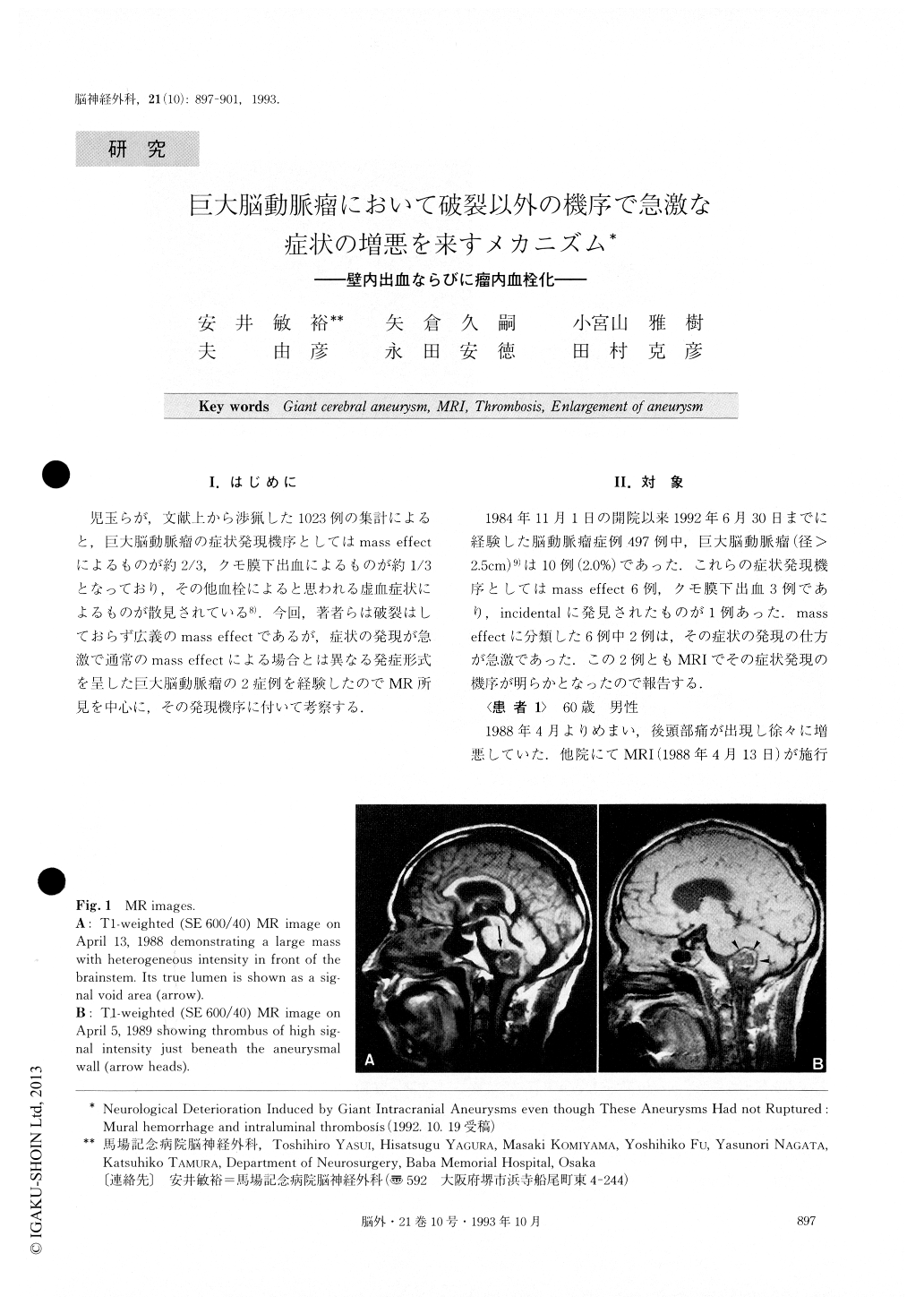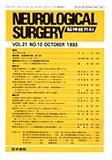Japanese
English
- 有料閲覧
- Abstract 文献概要
- 1ページ目 Look Inside
I.はじめに
児玉らが,文献上から渉猟した1023例の集計によると,巨大脳動脈瘤の症状発現機序としてはmass effectによるものが約2/3,クモ膜下出血によるものが約1/3となっており,その他血栓によると思われる虚血症状によるものが散見されている8).今回,著者らは破裂はしておらず広義のmass effectであるが,症状の発現が急激で通常のmass effectによる場合とは異なる発症形式を呈した巨大脳動脈瘤の2症例を経験したのでMR所見を中心に,その発現機序に付いて考察する.
The authors report two cases of intracranial giantaneurysms inducing acute neurological deterioration even though rupture of the aneurysms had not occurred. Neurological aggravation was attributable to the acute swelling of the aneurysmal mass after intramural hemor-rhage in one case, and the formation of rapid and mas-sive intraluminal thrombosis in another case. MRI con-firmed these mechanisms in both cases. MRI is very use-ful for demonstrating mural and intraluminal pathologies involving giant aneurysms.

Copyright © 1993, Igaku-Shoin Ltd. All rights reserved.


